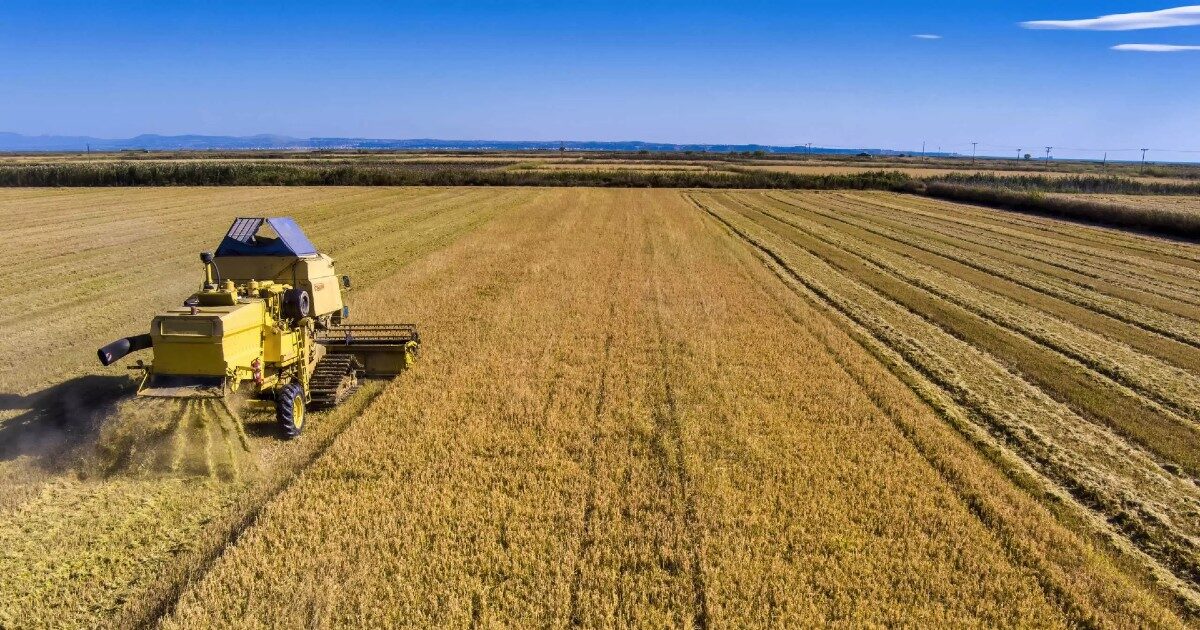The bases on which the ‘roadmap’ will be supported for its future Georgian and its food European Union In 2040, the European Commission is being considered this period.
Her “vision of agriculture and food” has already been presented, as well as the course to the forthcoming perennial fiscal framework, which concerns the European Union budget after 2027aiming for a next long -term budget, which will meet the expectations and emerging priorities of the European Union.
‘The announcements in combination present the European Commission Targets which will then influence both the European budget and the institutional framework of the joint agricultural policy of the following programming period 2028 – 2034, “the Secretary General of Rural Policy and International Relations of the Ministry of Rural Development and the Ministry of Rural Development told the Athens – Macedonian News Agency.
According to him, “we can say that there is also a trigger for the start of the dialogue for the next joint agricultural policy after 2027 and the changes it will include. This dialogue must deepen in practice, with more and more efficient interaction with farmers, food chain bodies and civil society at local and regional level in our countryto listen to their concerns and ideas. “
The basics of the announcements regarding the future of the CAP after 2027
The basic directions that the European Union will follow in the debate on the new joint agricultural policy, which will be implemented after 2027, have The goal of better targeted financial support, the coexistence of the agricultural sector with nature for better support, renewal of generations, food independence and a new approach to funding.
In detail:
Best targeted support
Food security and nature protection They support Europe’s quality of life, but face specific difficulties. Based on the recommendations from the strategic dialogue on the future of agriculture, and the vision of agriculture and food, a common agricultural policy that is suitable for the intended purpose must provide targeted support to farmers who need it most, promoting positive environmental and social results through rewards and rewarding flourishing rural areas.
Public support through the CAP is still necessary to support farmers’ income. However, the future support of the CAP will be more oriented to farmers actively active in Food production, financial health of agricultural farms and environmental maintenance.
In addition, support should be further oriented to farmers who need it most, with particular attention to farmers in areas with natural restrictions, young farmers and young farmers, as well as mixed farms. With regard to this, the possibility of enhanced use of measures such as the progressive reduction and the imposition of ceilings, taking into account the different structural and sectoral realities of the Member States, will be considered.
Coexistence of the agricultural sector with nature for better support
A climate neutral economy offers farmers new opportunities for complementary sources of income. Specific examples are the developing sector of organic production and ecological agricultural practices (such as anthropomorphic agriculture and bio -economy) that combine economic potential with environmental results and social responsibility.
The future CFP will evaluate how farmers can be provided better to further reduce greenhouse gas emissions from their agricultural and livestock activities. In addition, gradual steps are being taken to raise private funding, which should be further explored as a complementary source of income beyond public support.
Strategy for renewing generations
The future of food self -reliance in Europe in 2040 depends on young farmers and young farmers today. The European Commission will direct work on the renewal of generations, which will be presented in 2025, in close cooperation with the Member States. This strategy will provide recommendations for the political reaction and the measures required, both at the Union and the national and regional level.
Food independence
Today, the European Union’s food self -sufficiency depends largely on imported inflows, such as fertilizers, feeds, proteins and energy. Therefore, reducing these strategic dependencies and minimizing the risks for supply chains are crucial.
New funding approach
In the light of political and fiscal challenges, so that the European Union’s budget can achieve these goals, the existing funding situation requires change.
A new approach to a modern European Union budget should focus on: a) a plan for each country with basic reforms and investment, with a focus on our common priorities and b) a European competitiveness fund for the creation of an investment capacity that will support strategic sectors and technologies for European Union.
Source: RES-EIA
